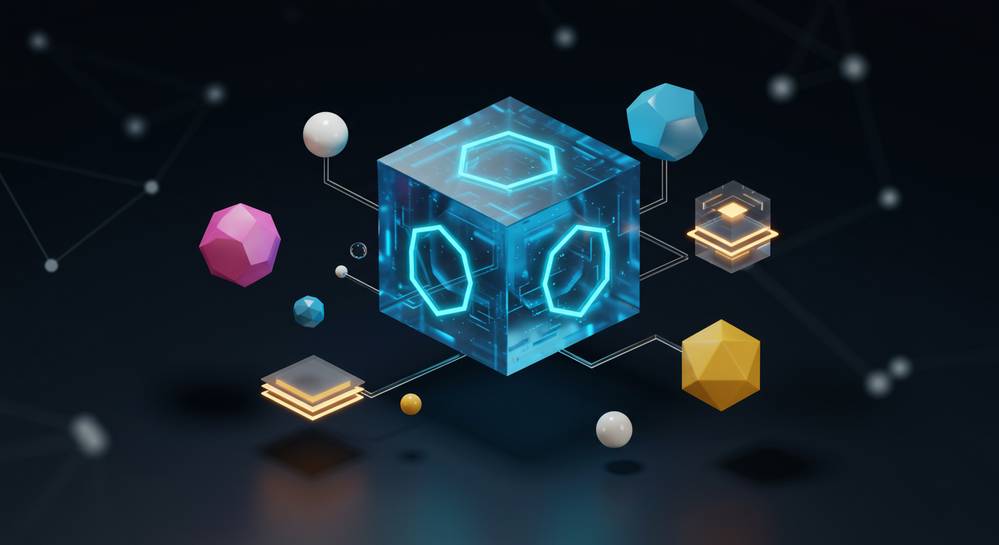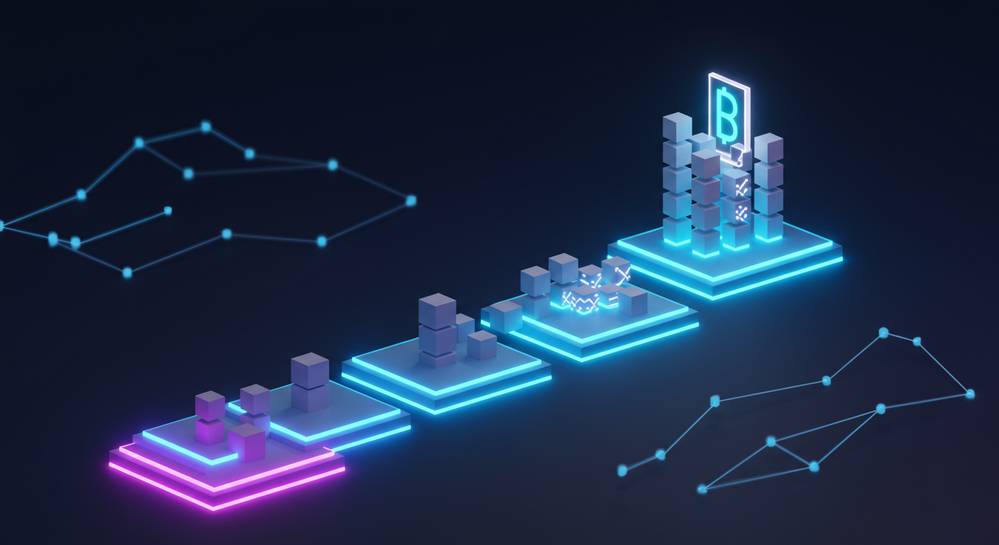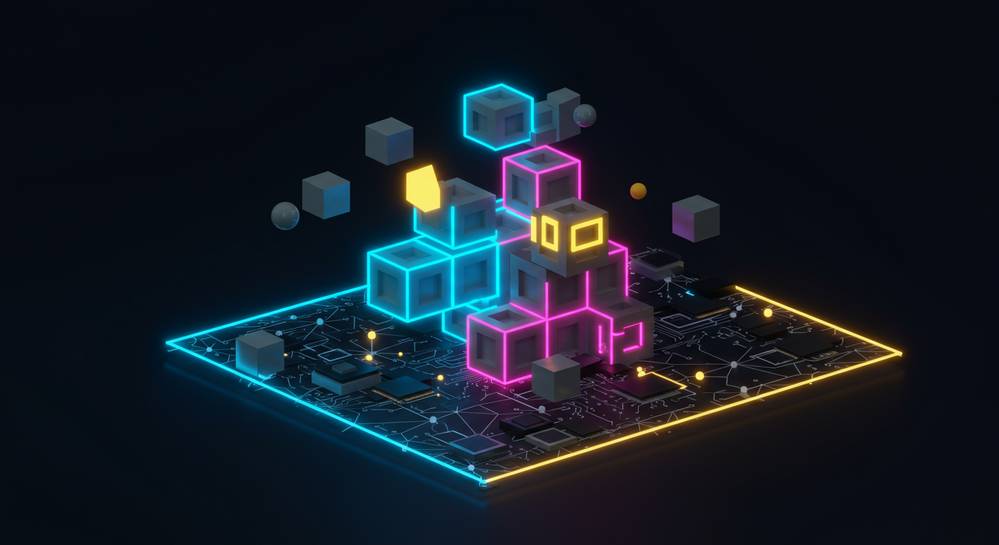Decentralized applications (dapps) are reshaping the digital landscape by removing central points of failure and control. But how does one begin building dapps on blockchain? This guide demystifies the entire process, covering the essential components, the development lifecycle, and the critical choice of a platform. We will provide you with the foundational knowledge needed to transform your decentralized idea into a functional and impactful application.
Understanding the core components of a dapp

A decentralized application is an ecosystem of components working in harmony. Mastering these parts is the first step when building dapps on blockchain. Each element plays a distinct role in the dapps functionality, security, and decentralization. Understanding how they connect is crucial for creating a seamless user experience on the decentralized web.
The frontend user interface
The frontend is what users see and interact with, much like a traditional website. It is typically built using standard web technologies like React, Vue, or Angular. This interface is responsible for creating a user-friendly experience. It fetches data from the blockchain and sends transaction requests to the user’s crypto wallet for signing, acting as the gateway to the dapps features.
The backend smart contracts
Smart contracts are the heart of any dapp, containing its core logic and rules. These self-executing programs are deployed directly onto the blockchain. They manage state changes and business logic using languages like Solidity for Ethereum or Rust for Solana. Once deployed, their code is immutable and transparent, ensuring all participants adhere to the same rules and protecting digital deals with smart contracts.
The blockchain network and wallet
The blockchain is the decentralized infrastructure hosting the smart contracts. The choice of a blockchain layer 1, such as Ethereum or Polygon, directly impacts performance, security, and costs. A crypto wallet like MetaMask acts as the bridge between the user and the dapp. It manages private keys and allows users to authorize transactions securely, giving them full control over their assets.
The step by step dapp development lifecycle

The journey from an idea to a deployed dapp follows a structured path. Successfully building dapps on blockchain demands a blend of technical expertise and a sharp focus on security. This lifecycle ensures a robust and functional application by breaking the process into manageable phases, each with a clear objective. Following these steps minimizes risks and maximizes the chances of a successful launch.
- Ideation and Whitepaper: This initial stage defines the dapps purpose, audience, and core functionality. A detailed whitepaper is created to outline the projects architecture, tokenomics, and long-term vision.
- Smart Contract Development: Developers write, test, and refine the smart contracts that govern the dapps logic. This is a critical phase where the core rules of the application are coded and secured.
- Frontend Development: While the backend is built, a parallel team works on the user interface. This involves creating an intuitive design that connects seamlessly with the blockchain.
- Testing and Auditing: Before deployment, the entire dapp undergoes rigorous testing on a testnet. A full security check, often through professional undefined, is crucial to identify vulnerabilities.
- Deployment and Maintenance: Once audited, the smart contracts are deployed to the main blockchain. Post-launch, the focus shifts to maintenance, user support, and implementing future upgrades.
Choosing the right blockchain platform for your dapp
Not all blockchains are created equal. The platform you choose will fundamentally shape your dapps capabilities, user base, and operational costs. When building dapps on blockchain, this decision requires a careful analysis of your projects needs. You must balance scalability, security, and the developer ecosystem, as there is no one-size-fits-all solution.
Ethereum the pioneer
As the first smart contract platform, Ethereum has the largest developer community and the most battle-tested infrastructure. Its extensive documentation makes it an accessible starting point. However, its popularity often leads to high transaction fees and slower speeds. Layer 2 scaling solutions are actively working to address these limitations for developers.
Solana the high-performer
Built for speed and low-cost transactions, Solana is a top choice for high-throughput applications like DeFi and gaming. It uses a different programming model with Rust instead of Solidity. Its unique consensus mechanism offers a distinct alternative to EVM-compatible chains, prioritizing performance for dapps that require rapid transaction processing.
Polygon the scaling solution
Polygon is a Layer 2 scaling solution for Ethereum, offering a practical middle ground. It provides a framework for building Ethereum-compatible networks that are faster and cheaper. This allows developers to benefit from Ethereums security and network effects while avoiding its high gas fees. You can explore more about undefined and its architecture.
Key challenges and future trends in dapp development

The world of dapp development is constantly evolving, presenting both obstacles and opportunities. Successfully navigating this landscape requires understanding the persistent challenges that developers face. For those building dapps on blockchain, addressing these issues is the key to driving mainstream adoption and unlocking the next wave of innovation.
User experience and onboarding
One of the biggest hurdles is the complex user experience. New users often struggle with concepts like wallet setup, seed phrases, and gas fees. The future lies in creating more intuitive interfaces that abstract away the underlying blockchain complexity. This will make dapps as easy to use as traditional web applications, opening the door for a broader audience.
Scalability and transaction costs
While Layer 2 solutions have made significant progress, scalability remains a core challenge. For dapps to serve millions of users, networks must handle high transaction volumes without compromising security. Ongoing research into sharding and other advanced scaling technologies is vital for building applications that can operate at a global scale efficiently and affordably.
Interoperability between blockchains
The future is multi-chain, meaning dapps will need to communicate across different networks. Sharing assets and data seamlessly between blockchains is a major technical hurdle. Cross-chain communication protocols and bridging solutions are becoming essential pieces of infrastructure. They will enable a more connected and functional Web3 ecosystem, breaking down the silos that exist today.
The journey of building a dapp is a challenging but highly rewarding endeavor that sits at the forefront of digital innovation. By understanding the core components, following a structured development lifecycle, and making informed platform choices, you are well-prepared to bring your decentralized vision to life. For the latest insights and expert guides in the crypto space, keep exploring with Blockchain Bulletin Weekly.